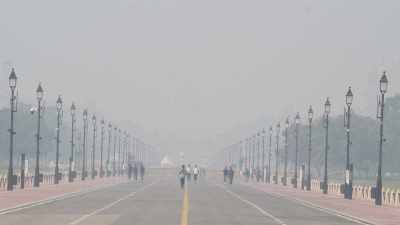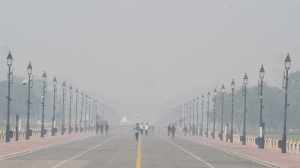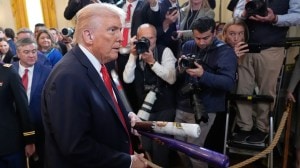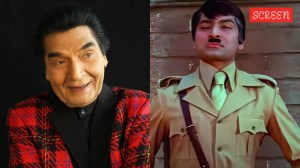Flagship adrift
A new era began when the Indian Naval Ship Vikrant (valour) joined the Navy in 1961. It was a proud occasion for the Navy when the late Prim...

A new era began when the Indian Naval Ship Vikrant (valour) joined the Navy in 1961. It was a proud occasion for the Navy when the late Prime Minister Jawaharlal Nehru came onboard to receive the ship berthed alongside the Ballard Pier in the Mumbai harbour. The induction of its first aircraft carrier transformed the Indian Navy into a viable force in the Indian Ocean.
In the intervening years, Vikrant sailed the seas training her crews and performing flag showing missions to numerous friendly countries, carrying message of goodwill and peace from the people of India.
The day of reckoning came ten years later, in 1971. Vikrant had to be committed to war when Pakistan attacked India. An Aircraft Carrier Task Force consisting of INS Vikrant and three frigates, Brahmputra, Beas and Kamorta was formed and deployed in the Bay of Bengal to establish a naval blockade and to destroy the enemy port facilities in Chittagong and Cox’s Bazar.
Initially, Vikrant had serious machinery problems. A crack in its boilermeant a time consuming replacement and it was doubtful whether she would be able to operate aircraft for action. Despite the lack of dockyard facilities on the East Coast, it goes to the credit of the ship’s crew who resorted to self-help and improvisation and undertook the necessary repairs and performed tasks beyond the call of duty; managed to make the aircraft carrier fit for the forthcoming naval operations against the enemy.
Vikrant’s hour of glory came in the morning of December 4, 1971. A squadron of eight Sea Hawk aircraft roared off her flight deck and successfully crippled the airfield at Cox’s Bazar and later at Chittagong. Subsequent daily air strikes launched from the Vikrant’s damaged port facilities sunk numerous ships and set the ammunition dumps and warehouses ablaze.
At sea her escort ships captured nearly 40 merchant ships trying to break the naval blockade. Within days, Vikrant was like the Queen of the Bay of Bengal, exerting total control of the sea and airspace, isolating thePakistani Army from their home-base. Denied of an option to withdraw, the enemy’s standing army of 90,000 fighting with their back to the wall had no way but to surrender. The ship lived up to its name.
It became the most decorated single unit in this war with the award of 2 Maha Vir Chakra, 8 Vir Chakra and scores of Nau Sena Medals.
Victorious in war and having served 35 years in the Navy, Vikrant was finally retired from active service on January 31, 1997. This was a highly nostalgic occasion to see the grand old lady go, as the Naval flag was lowered on board the ship for the last time. Thereafter, the future of this fine ship became a subject of a debate.
There were two schools of thought regarding her disposal, one to send her to the break-up yard and scrap her. The second and the most popular choice that has evolved is to convert her into a Maritime Museum berthing her on the Mumbai foreshore.
The general feelings, not only in the Navy but amongst the public at large, is that Vikrant hasbecome a part of our naval tradition and a symbol of the maritime power of a free India, in that the Aircraft Carrier Vikrant should be retained as a Museum to act as a source of inspiration for generations to come.
I appeal to all the heritage-conscious citizens to join the “Save the Vikrant” campaign to see a dream come true.
(Vice Admiral Swaraj Prakash commanded INS Vikrant in the rank of Captain Indian Navy during the 1971 Indo-Pak war and was decorated with a Maha Vir Chakra).





- 01
- 02
- 03
- 04
- 05


























